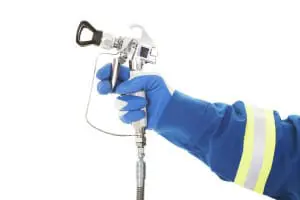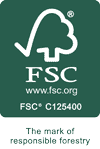Spray Lamination for Paper
Lamination is the process of combining layers of two or more substrates with a specific bonding agent. Many types of laminating processes are available for both small and large scale applications. Spray lamination is one such process.
Spray lamination has recently become popular for small scale projects due to the improved quality spray adhesives that are used. Consumers have found spray lamination useful for applications such as creating picture boards and for use as a craft adhesive. In addition to personal use, laboratories — including the Sierra Coating Technologies lab — use spray laminates for prototype creation.
Does Spray Lamination Work in Manufacturing?
On a small scale, spray lamination is often beneficial. However, spray lamination is not recommended for larger scale manufacturing applications. Spray lamination carries many disadvantages, when used in large scale operations, and is generally not the chosen method of making laminated products.
Disadvantages of spray lamination include:
- Low Volumes: One of the main disadvantages in manufacturing is that the process can only move low volumes of adhesive to the intended surface. When more adhesive is needed, the spray process is not able to evenly deliver the adhesive in metered amounts to the work surface. To accomplish laminations with higher levels of adhesive requires the pumping of more liquid adhesive than the existing spray systems can handle. Over the years, systems that work by delivering more liquid coating have been created. These systems rely on application rolls and some type of blade, rod, or secondary roll to control the amounts or remaining adhesive.
 Atomization: The spray process involves the atomizing of the adhesive, during which the substance is converted into small droplets. The atomized adhesive drops, when sprayed, are airborne between the spray mechanism and the target substrate. Significant process engineering is required in order to prevent the drops from settling on unwanted surfaces.
Atomization: The spray process involves the atomizing of the adhesive, during which the substance is converted into small droplets. The atomized adhesive drops, when sprayed, are airborne between the spray mechanism and the target substrate. Significant process engineering is required in order to prevent the drops from settling on unwanted surfaces.Aerosolization: When sprayed as an aerosol, tiny particles of adhesive are released into the air. This is a safety hazard that must be taken very seriously during the production process. There are many Occupational Safety & Health Administration (OSHA) regulations that must be followed when working with spray laminates. Failure to follow these regulations can lead to penalties, not to mention the possibility of causing harmful side effects to individuals not properly protected from the particulates.
- VOC Solvents: To create the adhesive that can be atomized, solvents are often required. These solvents contain volatile organic compounds (VOCs). The S. Environmental Protection Agency (EPA) and many states limit manufacturers in the amount of VOCs that can be created during the use of the solvent-based adhesives.
Alternatives to Spray Lamination
Sierra Coating Technologies has invested in equipment that is designed to deliver adhesive in the correct amount for the vast majority of laminations.
Although spray lamination can be used in small, personal, prototype, and lightweight material projects, it is not the recommended solution for manufacturing in large volumes. Some products can be prototyped with spray systems before being further developed on lamination systems designed for large scale manufacturing.
Prepared for any job, Sierra Coating Technologies specializes in a number of lamination and coating methods. These processes include:
- Gravure
- Direct reverse gravure
- Offset gravure
- Slot die
- Pan and trailing blade
- Roll coating
- One color offset print
- Offset pattern
Contact Sierra Coating to discuss your project. Our team is equipped with the experience and expertise to cultivate the best method of lamination and/or coating for your product.


